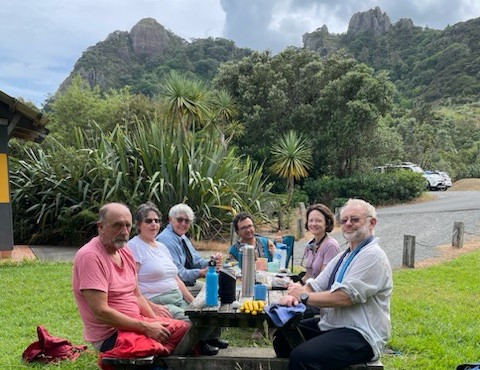 Prunus campanulata
Prunus campanulata
Also known as
Bell-flowered cherry, Formosan cherry
What does it look like?
Taiwan cherry is a deciduous tree growing up to 8 m high. Leaves are serrated, thin and cherry-like (rounded at base, broadly elliptic with sharp point at tip). Leaves can be up to 17 mm long x 9 cm wide but usually 6-13cm by 2-6 cm, and are on 1.2 – 2 cm petioles (leaf stalks). Main veins on leaf are obvious, and both surfaces are hairless.
Very distinctive when flowering in July-August; magenta or deep pink bell-shaped flowers hang in clusters, prior to spring leaf emergence. Shiny scarlet fruit up to 12 x 10 mm produced October to December.
Taiwan cherry’s bell shaped flowers distinguish it from other naturalised cherries such as Japanese hill cherry (P. serrulata), cherry laurel (P. laurocerasus), Portugal laurel (P. lusitanica) and sweet cherry (P. avium).
Why is it a problem?
Forms dense stands in open or disturbed habitats preventing regeneration. Seeds are long-lived and widely dispersed by birds. It is tolerant of warm and cold climates, low to medium rainfall.
How does it spread?
Birds spread the abundant seed.
How much of it do we have on the Whangarei Heads Peninsula?
The core infestation is at Tamaterau, with other satellite hotspots at Reotahi/Darch point and McKenzie bay. Taiwan cherry is spreading outward from these locations and is a risk to all of the shrubland habitat.
What can we DO about it at Whangarei Heads?
We can stop the spread. If we identify and eliminate the outliers and satellite hotspots that are spreading away from the core (very easy to do in July/August) we can protect the rest of the peninsula. Taiwan cherry is easy to kill, and it is much easier to prevent the establishment of seedlings and saplings then it is to deal to a forest of established trees – act now!
Check out the control methods below:
How do I control it?
- Pull out seedlings and small plants. Leave to rot on site or mulch (you can use a lawn mower).
- Cut stump application: Cut at ground level & treat stump immediately with (5g metsulfuron/1L water), or (250ml glyphosate/1L water), or (100mls Tordon Brushkiller®/1L water), or Picloram gel. All cut material can be mulched or left to rot on site.
- Frill and Fill: Make deep downward cuts into the sapwood around the base of the tree, taking care not to ring bark the plant, and immediately saturate the cuts with 250mls glyphosate/litre water), or (5g metsulfuron / 1L water). Wait until the liquid subsides/absorbs and then apply again. Undiluted Tordon Brushkiller® can also be used but extra care must be taken when working with undiluted herbicde.
- Drill & fill: Drill (c.12mm drill bit) sloping holes into the sapwood at 10cm intervals around the base trunk, & immediately fill each hole with (20g metsulfuron / litre water). Undiluted glyphosate or undiluted Tordon Brushkiller® can also be used but extra care must be taken when working with undiluted herbicide.
- Spray when in full leaf with (5g metsulfuron + 10ml penetrant/10L water), or (60mls Tordon Bruskiller® + 10mls penetrant/10L water).
Drill & Fill Demonstration
Follow up on new seedlings for 2 years after the removal of the last adult plant. Dense shade will also reduce re-infestation.
CAUTION: when using any herbicide or pesticide PLEASE READ THE LABEL THOROUGHLY to ensure that all instructions and safety requirements are followed.
Click here for more information on the herbicides referenced in the control methods, or here for more information on the suggested techniques.
Taiwan Cherry Photos
Save
Save



